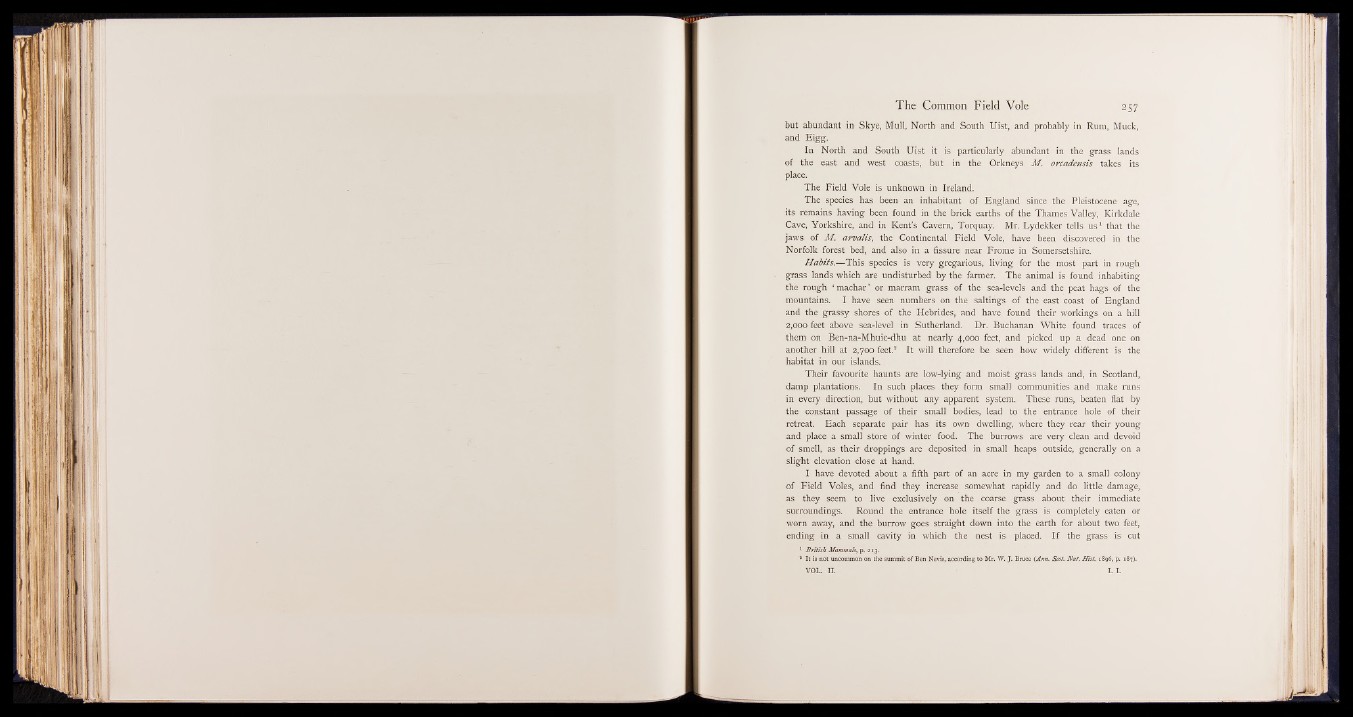
The Common Field Vole 2 5 7
but abundant in Skye, Mull, North and South Uist, and probably in Rum, Muck,
and Eigg.
In North and South Uist it is particularly abundant in the grass lands
of the east and west coasts, but in the Orkneys M. orcadensis takes its
place.
The Field Vole is unknown in Ireland.
The species has been an inhabitant of England since the Pleistocene age,
its remains having been found in the brick earths of the Thames Valley, Kirkdale
Cave, Yorkshire, and in Kent’s Cavern, Torquay. Mr. Lydekker tells u s 1 that the
jaws of M. a rva lis, the Continental Field Vole, have been discovered in the
Norfolk forest bed, and also in a fissure near Frome in Somersetshire.
H abits.—This species is very gregarious, living for the most part in rough
grass lands which are undisturbed by the farmer. The animal is found inhabiting
the rough ‘ machar *' or marram grass of the sea-levels and the peat hags of the
mountains. I have seen numbers on the saltings of the east coast of England
and the grassy shores of the Hebrides, and have found their workings on a hill
2,000 feet above sea-level in Sutherland. Dr. Buchanan White found traces of
them on Ben-na-Mhuic-dhu at nearly 4,000 feet, and picked up a dead one on
another hill at 2,700 feet.2 It will therefore be seen how widely different is the
habitat in our islands.
Their favourite haunts are low-lying and moist grass lands and, in Scotland,
damp plantations. In such places they form small communities and make runs
in every direction, but without any apparent system. These runs, beaten flat by
the constant passage of their small bodies, lead to the entrance hole of their
retreat. Each separate pair has its own dwelling, where they rear their young
and place a small store of winter food. The burrows are very clean and devoid
of smell, as their droppings are deposited in small heaps outside, generally on a
slight elevation dosé at hand.
I have devoted about a fifth part of an acre in my garden to a small colony
of Field Voles, and find they increase somewhat rapidly and do little damage,
as they seem to live exclusively on the coarse grass about their immediate
surroundings. Round the entrance hole itself the grass is; completely eaten or
worn away, and the burrow goes straight down into the earth for about two feet,
ending in a small cavity in which the nest is placed. I f the grass is cut
1 B ritish Mammals, p. 213.
* It is not uncommon on the summit of Ben Nevis, according to Mr. W. J . Bruce {Ann. Scot. N at. H ist. 1896, p. 187).
VOL. II. L L